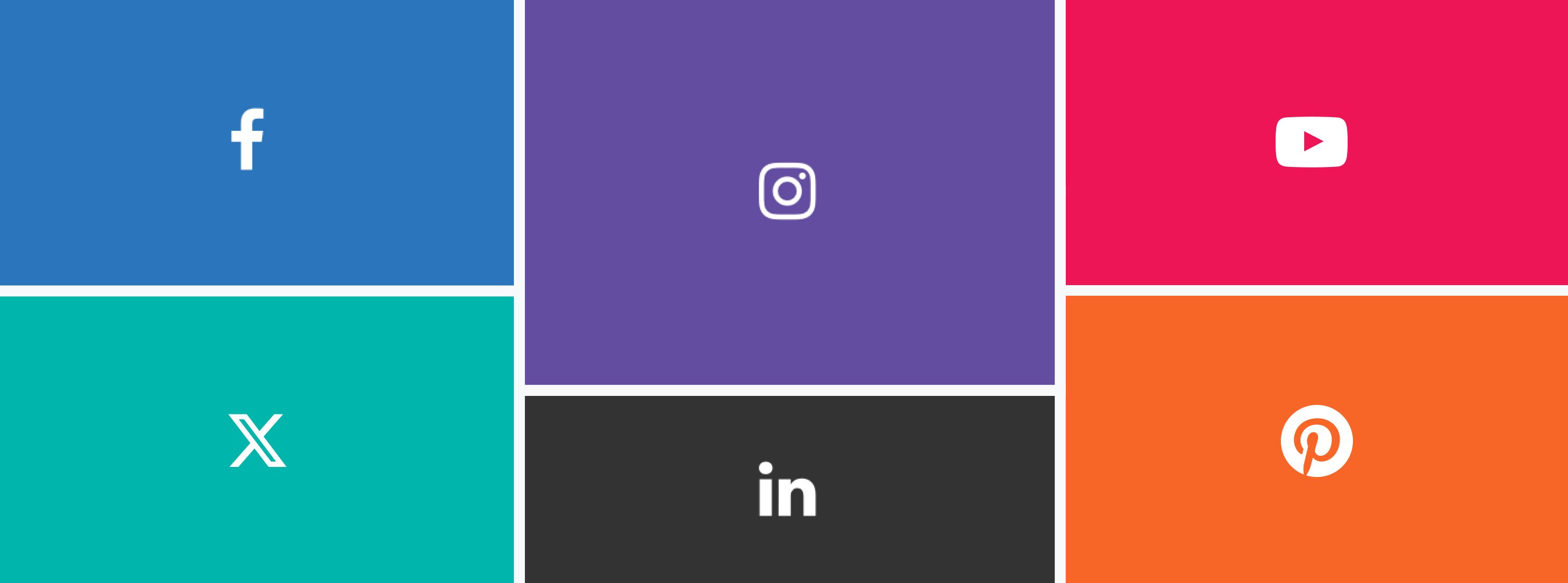LinkedIn Ads have emerged as a valuable digital advertising tool for brand awareness and cultivating thought leadership across industries, even for retail or transactional companies that might have previously preferred other platforms.
Like any ad platform, LinkedIn Advertising has its pros and cons. If you’re wondering if your business should start using LinkedIn Ads as a part of your media mix, here are some facets of LinkedIn Ads that may influence your decision.
Benefits of LinkedIn Advertising
- Low barrier to entry
- Diverse ad units
- Emphasis on messaging
- Targeting options unmatched by any other platform
LinkedIn Advertising Concerns
Benefits of LinkedIn Advertising
LinkedIn Advertising has a low barrier to entry
Setting up digital advertising campaigns on some platforms can be a chore. Not on LinkedIn. You can have a campaign live in LinkedIn within five minutes of starting to set it up. For marketers who are looking to get results quickly, this can be a boon to your performance.
LinkedIn Ads offers diverse ad units
Like any social platform, LinkedIn has had to create many different ad units to keep pace with their competition. As a result, LinkedIn Advertisers have the option of using video, images, or promoted content ads, in addition to the lead generation feature that has become common in social ad channels.
Most brands stick to using traditional image ads, which works perfectly well if the ads tell a good story. That’s very much the case in this ad from Dell, touting the company’s legacy using a favorite social media trope, #ThrowbackThursday:
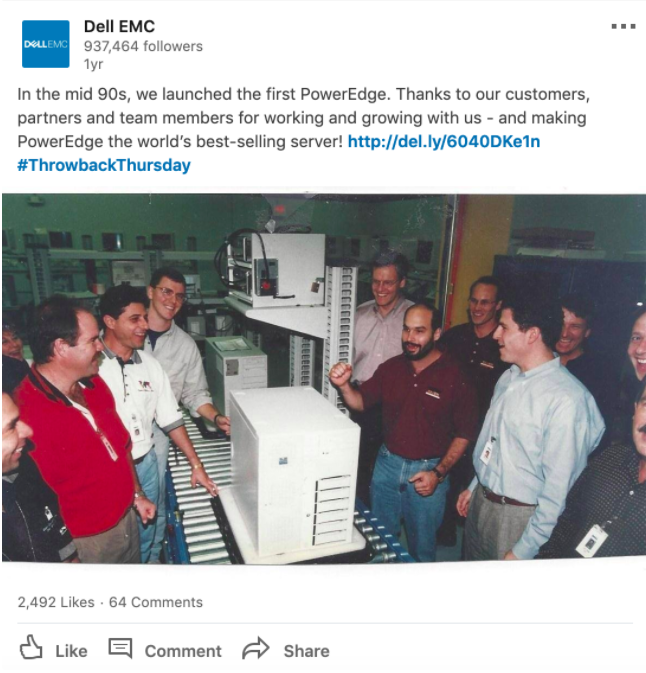
Of course, LinkedIn users aren’t averse to promotions, which JetBlue did a great job capitalizing on with this ad:
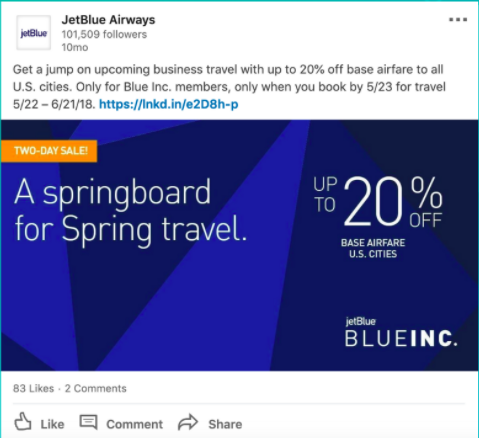
As we mentioned, B2C and retail brands can get in on the action, too. In this HelloFresh ad, they not only accomplish expanding their audience using a non-traditional channel, they also establish authority for themselves by sharing partner content from BusinessWeek:
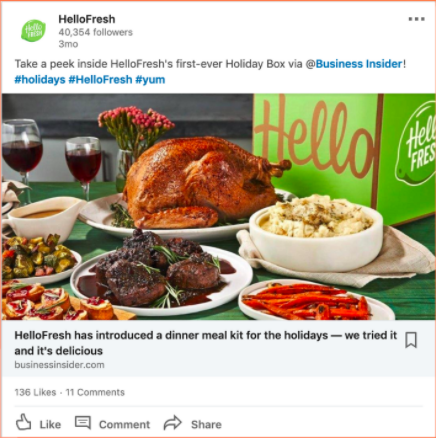
Video ads on LinkedIn are a great way for brands to tell their story to a wide pool of users that can be used to build remarketing audiences, and promoted content is a great way to connect with users who may have an interest in your product or service but aren’t ready to buy. Image ads and lead ads are good lower-funnel tools to capture more prospects and expand your email marketing and retargeting lists.
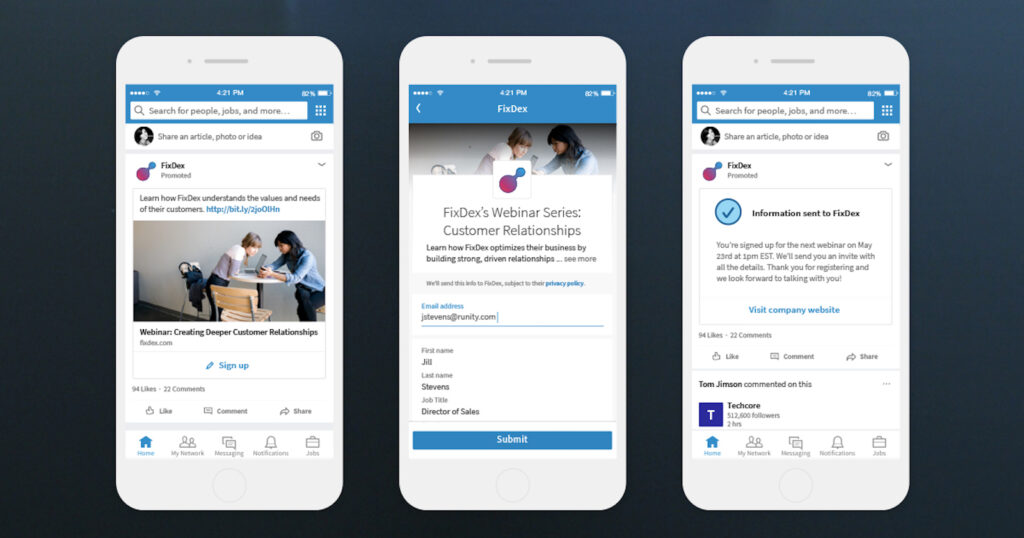
Emphasis on messaging
LinkedIn got its start in advertising as a place for recruiters, headhunters and HR folks to find the ideal candidate for jobs they had to fill. And while that’s not their only focus anymore, LinkedIn is still the best social platform to use to connect brands with their audience by way of Messages.
Anyone who’s used LinkedIn more than once or twice is sure to be familiar with Messages, as you’ve likely received paid Message ads from recruiters or vendors. But the usefulness of Messages shouldn’t start and end with solicitations for business. Because of LinkedIn’s precise targeting options (more on that in a moment), Messages can also be used to create or nurture existing relationships, support account-based marketing goals and build affinity, regardless of industry.
As business evolves during the coronavirus pandemic and beyond, using marketing and advertising to create, nurture and develop relationships is going to become more and more important. Audiences expect not just trust, but also empathy and social responsibility in these times, according to HBR. And if they expect that now, they’ll certainly continue to expect it moving forward, so marketers shouldn’t sleep on the ability to create and cultivate direct communication with their audiences.
LinkedIn Ads offers targeting options unmatched by any other platform
Prior to the Cambridge Analytica (and various other) scandal(s), Facebook allowed advertisers to target users by employer, job title, and lots of other professional criteria, like education level. Not so anymore. That means that LinkedIn is the only platform that allows advertisers to group audiences by employer (past or present), job title, years of experience, education level, industry, professional certifications, and more.
You can also target users on LinkedIn by which companies they follow. Although most people on LinkedIn follow certain companies because they may be interested in careers there, this is still a good way to target people by their true interests, if done right.
LinkedIn Ads, like any other ad platform, also supports remarketing and lookalike—called customer match—audiences, which can be a great way for brands to expand their reach. And because LinkedIn is owned by Microsoft, one of the unheralded features of LinkedIn Ads is that its audiences can also be used in Microsoft Advertising (nee Bing Ads), which represents the only opportunity in the digital advertising space for search marketers to put social audiences to use.
With all of these targeting tools available to marketers, it’s no wonder that businesses trying to push their products or services are flocking to LinkedIn to advertise. But with such specific targeting, LinkedIn Ads also represents an opportunity for B2C, ecommerce, or transactional retailers to become a disruptive force. After all, if you can create lookalike audiences using LinkedIn Ads, you can reach new customers in the platform, regardless of what you’re selling. If you’re wondering if your business is a good fit for LinkedIn Ads, there are plenty of reasons to get started.
Downside of advertising on LinkedIn
Despite everything it offers to digital advertisers, there are some downsides to advertising on LinkedIn. Consider these carefully before you commit to advertising in the platform.
Minimum budgets
Most LinkedIn Ads campaigns require a minimum daily budget. While this budget isn’t high—typically it’s $10—committing to a minimum can be tricky for marketers whose advertising budgets are small, or whose budgets are inflexible. A $10 daily commitment on LinkedIn is $3,650 per year, and if the channel doesn’t perform well, marketers may find themselves wishing they could shift those funds elsewhere.
For brands who are trying to determine if their budget can support a LinkedIn spend, tools like Raka’s digital advertising calculator can be extremely helpful in projecting results and evaluating whether the commitment is a wise one.
No custom reporting
LinkedIn’s reporting dashboard is pretty bare bones, and doesn’t offer marketers the ability to choose from an array of metrics or customize reporting views like Google, Facebook, or even a lot of programmatic platforms do. That can be a deal-breaker for a lot of marketers who require custom reporting to justify their efforts, or at least easy-to-use reporting tools, which LinkedIn doesn’t yet offer.
Lack of true audience customization
While LinkedIn does support lookalike and retargeting audiences, advertisers cannot truly create a custom audience with the platform because it only allows advertisers to select ranges of ages rather than select individual ages to target, for example. In certain cases, the platform restricts the ability of marketers to limit ads from serving to certain genders or locations for compliance reasons. While it’s easy to understand why these limitations may be in place, they are not a marketer’s best friend.
Clunky interface
While it’s easy to get ads up and running on LinkedIn, the interface has some drawbacks. One of the places where LinkedIn trails its competitors is in the usability of the interface, which prohibits marketers from quickly and easily duplicating ads, campaigns, or campaign groups to preserve the features of existing assets. There is no bulk editor or duplication tool in the platform, which makes creating multiple ads or campaigns for the purpose of testing tedious, as well.
In addition, LinkedIn Ads doesn’t feature a media library like Facebook does, meaning that each time you want to create a new ad or change the image in an existing one, advertisers must upload the image again.
Despite its shortcomings, LinkedIn Ads offer a lot for marketers looking to expand their brand’s reach. Like any new advertising channel, it’s important that marketers be judicious about the budget and resources they commit to LinkedIn Ads.





